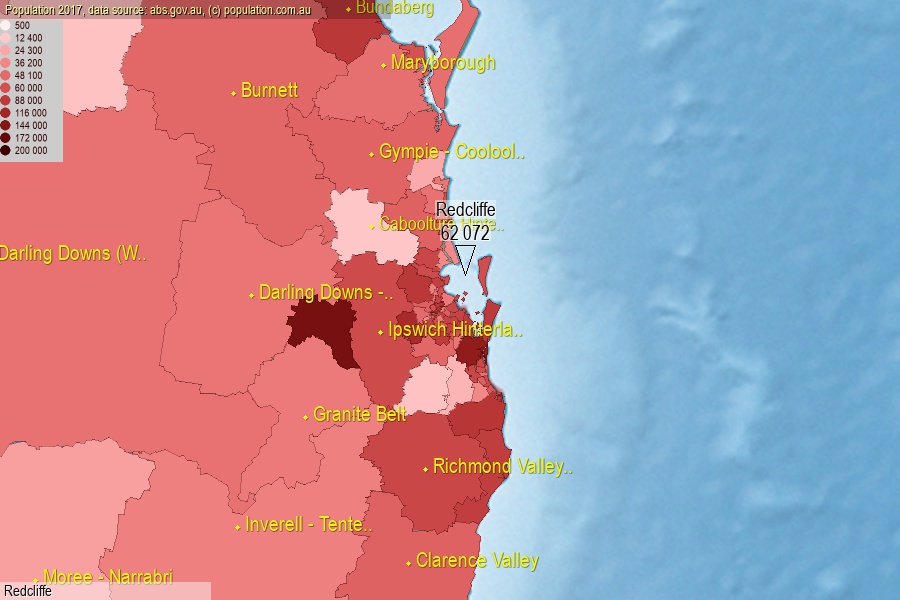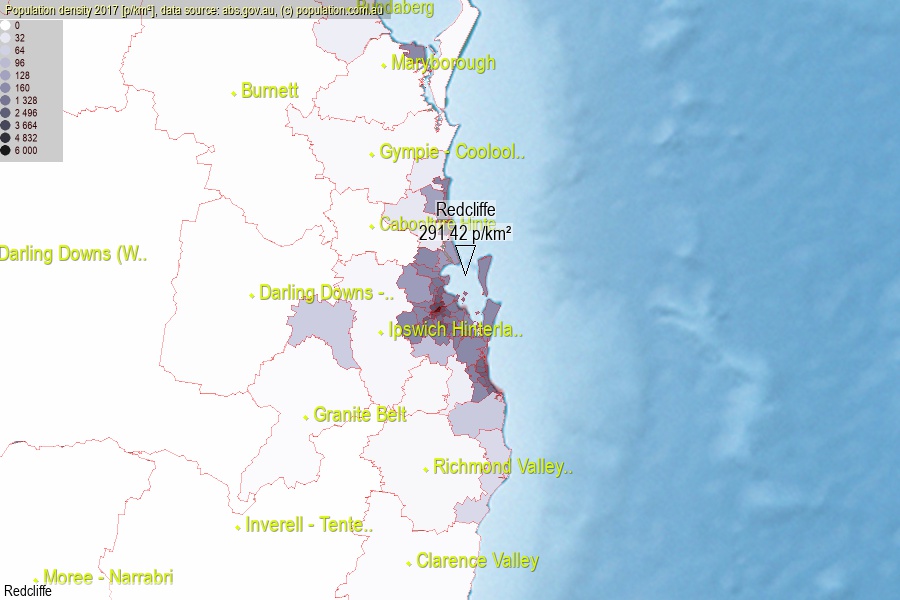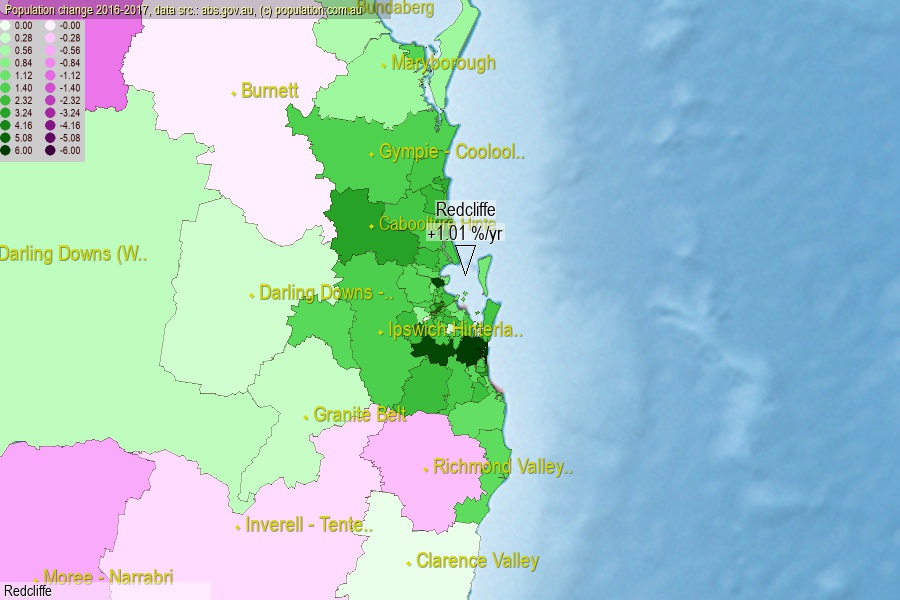 population.com.au
population.com.auLast official estimated population of Redcliffe (as Statistical Area Level 3) was 62 072 people (on 2017-06-30)[2]. This was 0.25% of total Australian population and 1.244% of QLD population. Area of Redcliffe is 213.00 km², in this year population density was 291.42 p/km² . If population growth rate would be same as in period 2016-2017 (+1.01%/yr), Redcliffe population in 2025 would be 67 280. [0]



Click to enlarge. Redcliffe is located in the center of the images.
Population [people], population density [p./km²] and population change [%/year] [2]
View borders » (new window) [4]
[1991-1992] +0.63 %/Y
[1992-1993] -0.08 %/Y
[1993-1994] -0.20 %/Y
[1994-1995] -0.17 %/Y
[1995-1996] +0.50 %/Y
[1996-1997] -0.41 %/Y
[1997-1998] -0.68 %/Y
[1998-1999] -0.02 %/Y
[1999-2000] +0.34 %/Y
[2000-2001] +1.85 %/Y
[2001-2002] +1.40 %/Y
[2002-2003] +1.59 %/Y
[2003-2004] +0.74 %/Y
[2004-2005] +1.17 %/Y
[2005-2006] +1.17 %/Y
[2006-2007] +2.52 %/Y
[2007-2008] +2.51 %/Y
[2008-2009] +2.34 %/Y
[2009-2010] +1.77 %/Y
[2010-2011] +1.37 %/Y
[2011-2012] +1.31 %/Y
[2012-2013] +1.08 %/Y
[2013-2014] +1.14 %/Y
[2014-2015] +0.87 %/Y
[2015-2016] +0.87 %/Y
[2016-2017] +1.01 %/Y
[0] Calculated with linear interpolation from officially estimated population
[1] Read more about SA3 and Australian Statistical Geography Standard (ASGS) on abs.gov.au
[2] Population data from Australian Bureau of Statistics (Population and density: 2017; change: 2016-2017)
[3] Digital Boundaries: Australian Statistical Geography Standard (ASGS) 2016.
[4] Border coordinates are simplifyed using Ramer-Douglas-Peucker algorithm.